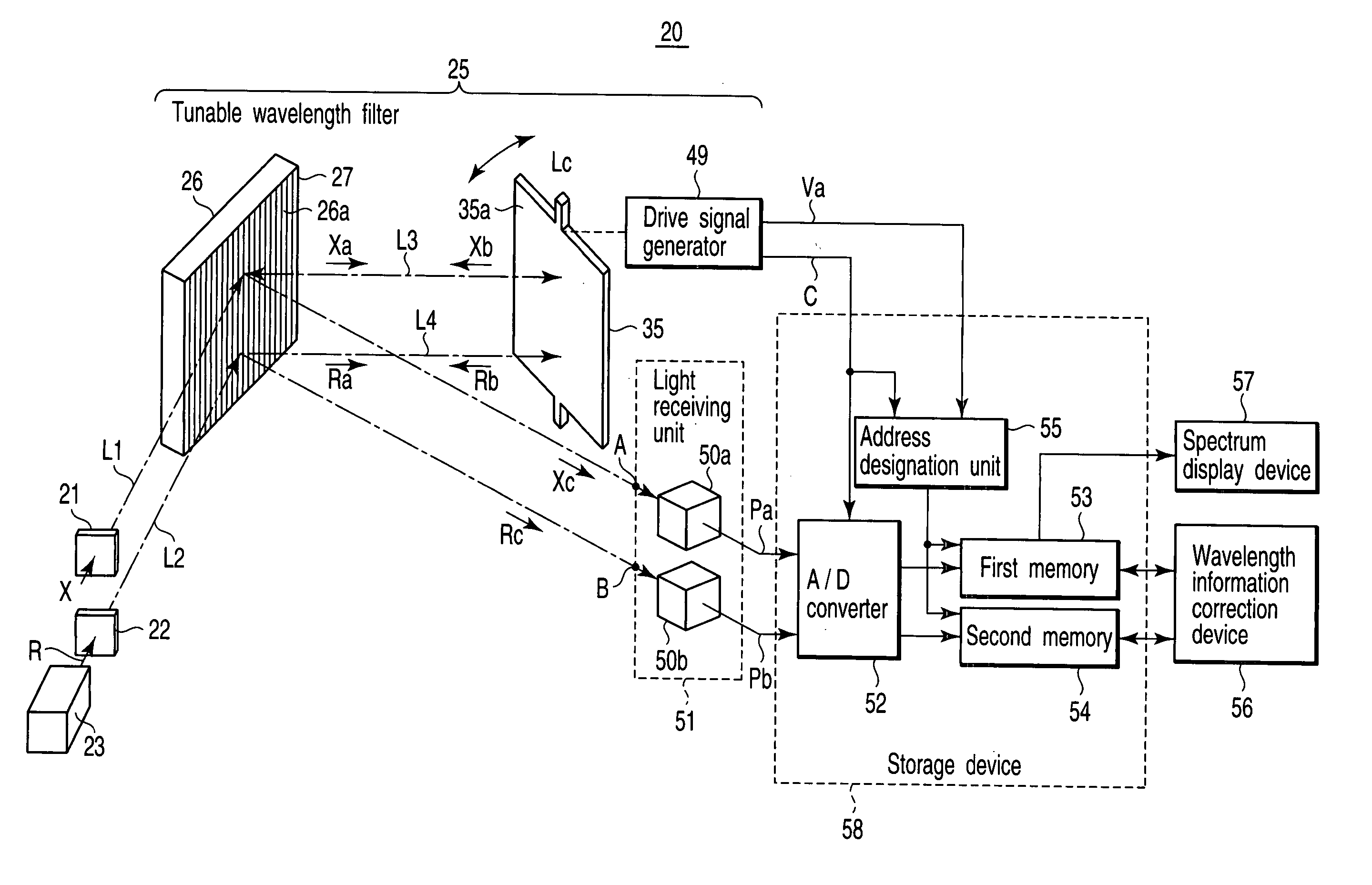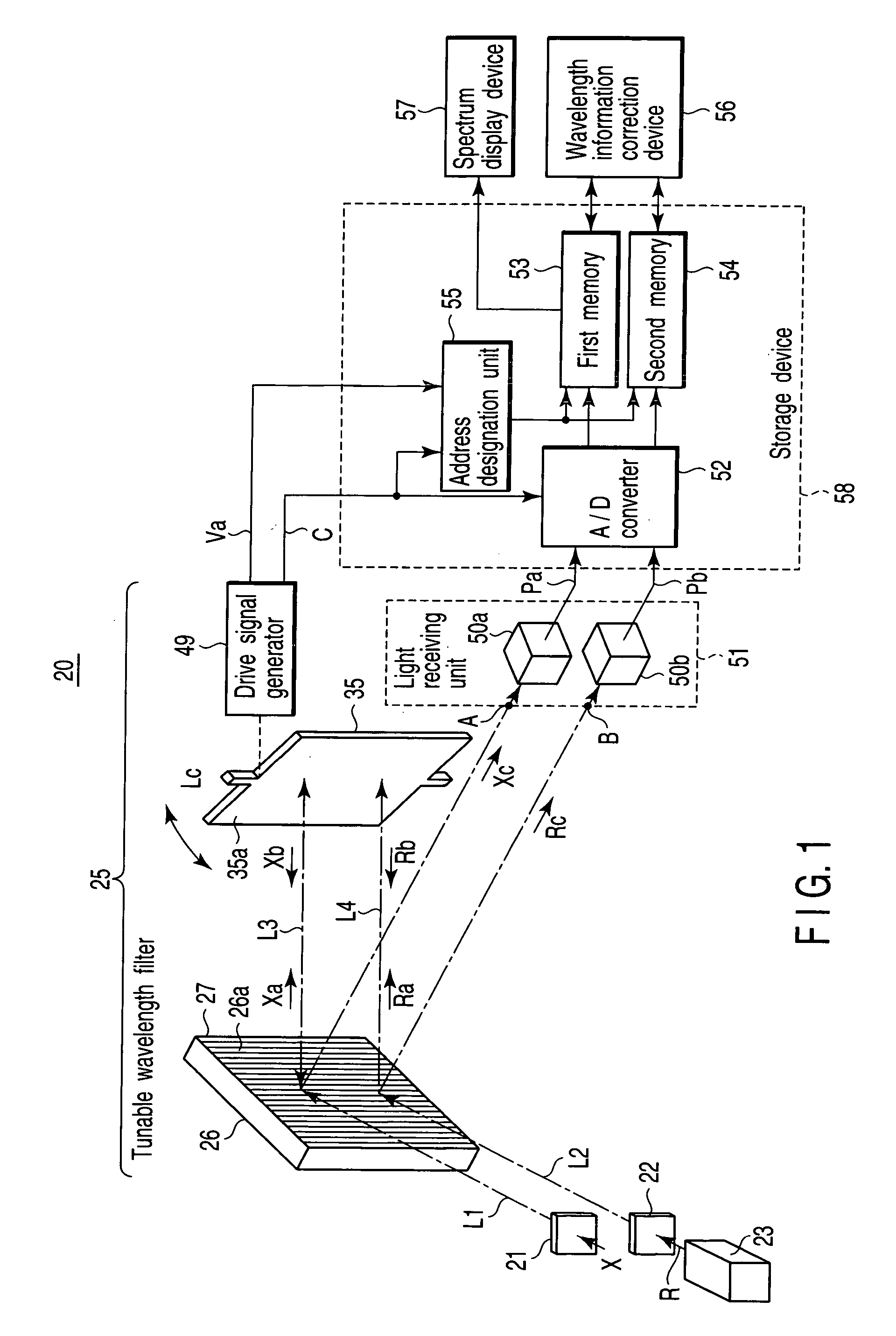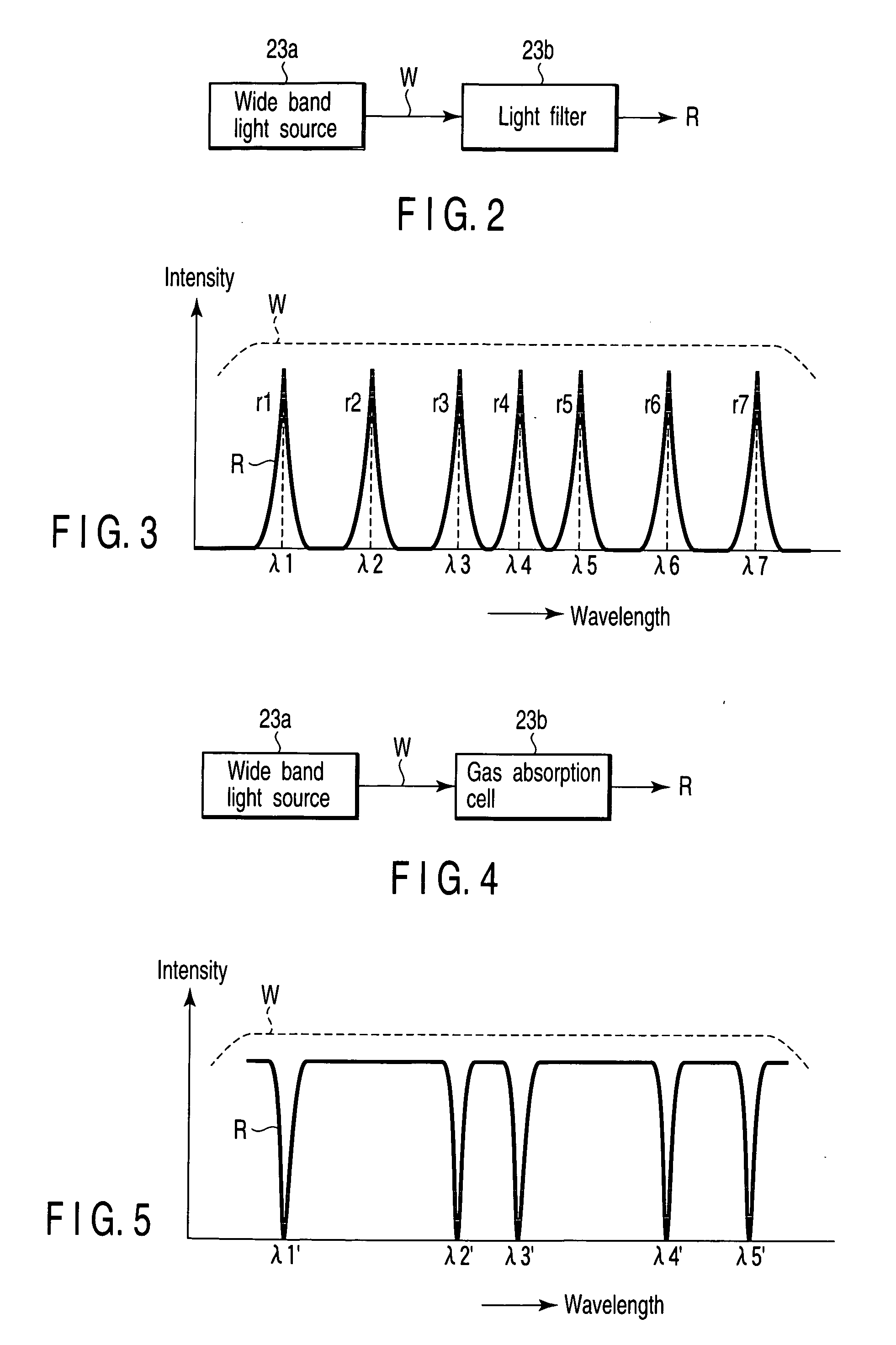Optical spectrum analyzer
- Summary
- Abstract
- Description
- Claims
- Application Information
AI Technical Summary
Benefits of technology
Problems solved by technology
Method used
Image
Examples
first embodiment
[0148]FIG. 1 is a block diagram shown to explain an overall configuration of an optical spectrum analyzer 20 according to a first embodiment of the present invention.
[0149] That is, the optical spectrum analyzer of the present invention basically includes a tunable wavelength filter 25, a reference light source 23, light incident devices 21 and 22, a light receiving device 51, a storage device 58, and a correction device 56. The tunable wavelength filter 25 causes wavelength components contained in incident light to selectively exit therefrom as well as changes the selected wavelength as time passes. The reference light source 23 radiates reference light R whose wavelength in which light intensity is maximized or minimized is known. The light incident devices 21 and 22 cause to-be-measured light X to be incident on the tunable wavelength filter 25 along a first optical axis L1 and at the same time cause the reference light R from the reference light source 23 to be incident on the ...
second embodiment
[0221]FIG. 11 is a block diagram shown to explain a configuration of an optical spectrum analyzer 60 according to a second embodiment of the present invention.
[0222] Note that, in FIG. 11, the portions arranged similar to those of the optical spectrum analyzer 20 according to the first embodiment described above are denoted by the same reference numerals as those in FIG. 1 and the explanation thereof is omitted.
[0223] In the optical spectrum analyzer 20 according to the first embodiment of the invention described above, the reference light R and the to-be-measured light X are caused to be incident on the single diffraction grating 26 of the tunable wavelength filter 25.
[0224] However, the tunable wavelength filter 25 may be configured by using two diffraction gratings 26A and 26B as in the optical spectrum analyzer 60 according to the second embodiment of the invention shown in FIG. 11.
[0225] The first diffraction grating 26A receives to-be-measured light X incident thereon from...
third embodiment
[0232]FIG. 12 is a block diagram shown to explain a configuration of an optical spectrum analyzer 70 according to a third embodiment of the present invention.
[0233] Note that, in FIG. 12, the portions configured similar to those of the optical spectrum analyzer 60 according to the second embodiment described above are denoted by the same reference numerals as those in FIGS. 1 and 11 and the explanation thereof is omitted.
[0234] When the two diffraction gratings 26A and 26B are used as in the optical spectrum analyzer 60 according to the second embodiment of the invention, the height of the turning mirror 35 can be reduced in an axial direction.
[0235]FIG. 12 shows a configuration example of the optical spectrum analyzer 70 in which two diffraction gratings 26A and 26B are arranged in plane symmetry.
[0236] The first diffraction grating 26A receives to-be-measured light X incident thereon from a first light incident device 21 at a predetermined angle on a diffraction surface 26a, c...
PUM
 Login to View More
Login to View More Abstract
Description
Claims
Application Information
 Login to View More
Login to View More - R&D
- Intellectual Property
- Life Sciences
- Materials
- Tech Scout
- Unparalleled Data Quality
- Higher Quality Content
- 60% Fewer Hallucinations
Browse by: Latest US Patents, China's latest patents, Technical Efficacy Thesaurus, Application Domain, Technology Topic, Popular Technical Reports.
© 2025 PatSnap. All rights reserved.Legal|Privacy policy|Modern Slavery Act Transparency Statement|Sitemap|About US| Contact US: help@patsnap.com



